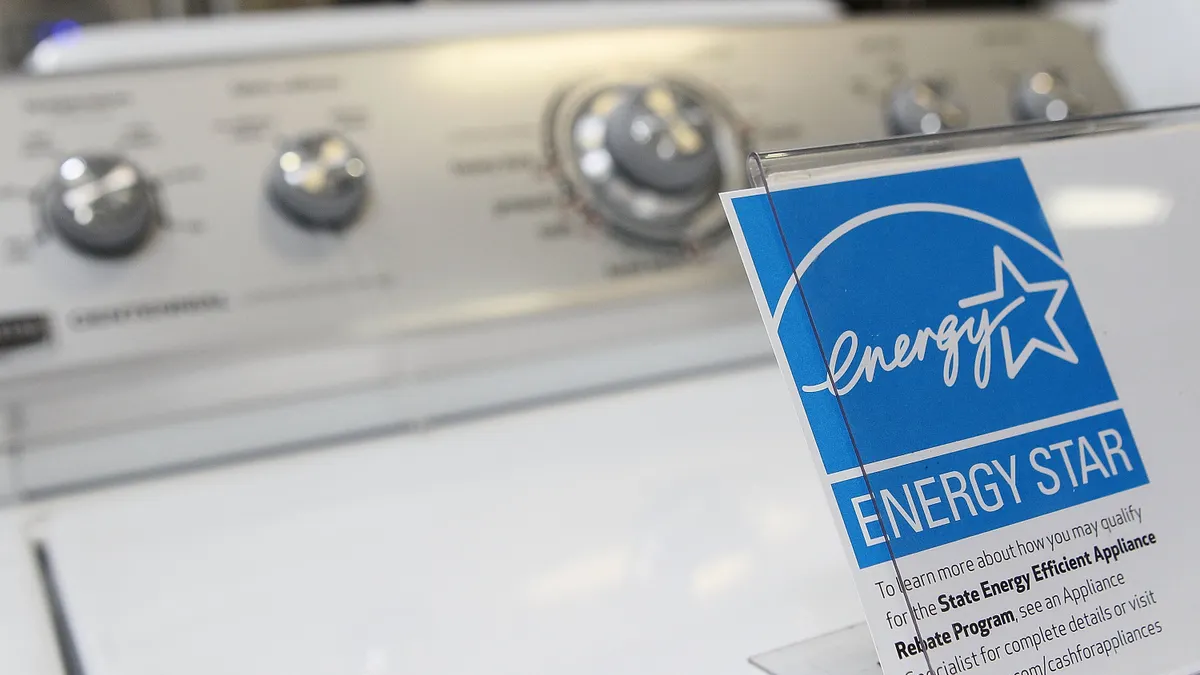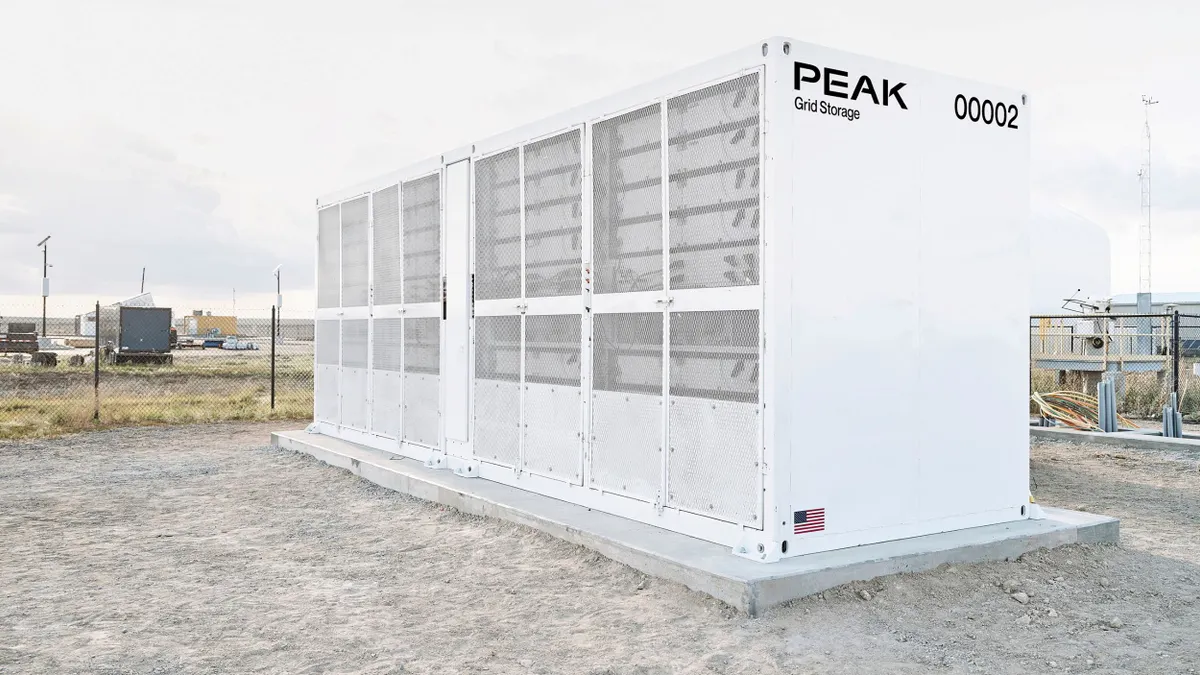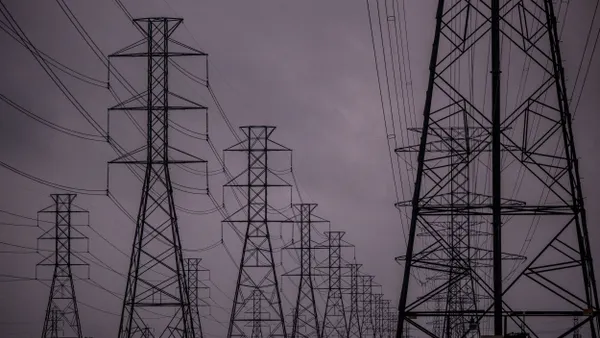Dive Brief:
- The Environmental Protection Agency plans to end its popular Energy Star program, according to widespread media reports. The program has helped consumers identify energy-efficient home appliances for more than 30 years.
- The “next phase of organizational improvements” to the EPA was announced Friday, an agency spokesperson said in an email. A current and future organization chart of impacted offices was provided.
- Eliminating the Energy Star program will reduce consumer access to vital information about the energy use of appliances, efficiency advocates said. “If you wanted to raise families’ energy bills, getting rid of the ENERGY STAR label would be a pretty good way,” American Council for an Energy-Efficient Economy Executive Director Steven Nadel said in a statement.
Dive Insight:
Energy Star was created in 1992 under President George H.W. Bush and expanded over the years as its popularity grew. The program has helped consumers save more than $500 billion in energy costs and 5 trillion kWh since its inception, according to the program website.
Energy Star has “grown to become the international standard for energy efficiency and one of the most successful voluntary U.S. government programs in history,” according to the EPA.
The program “and all the other climate work, outside of what’s required by statute, is being de-prioritized and eliminated,” Paul Gunning, director of EPA’s Office of Atmospheric Protection, told employees on Monday, The New York Times reported.
In April, more than 1,000 companies and organizations lobbied EPA to maintain the program, noting that “a typical household can save about $450 on energy costs each year” by choosing Energy Star products. The program has more than 16,000 participating companies and organizations, including over 1,800 manufacturers, who rely on the Energy Star program “to drive consumer demand for energy efficiency.”
Energy Star-certified homes — those built to meet strict energy efficiency standards set by the EPA — represented about 25% of new U.S. housing starts last year, the coalition said. “By reducing overall energy demand, Energy Star helps utilities better manage energy supply, lowering costs for all ratepayers while making the energy grid more secure,” it said. The group included the National Electrical Manufacturers Association, National Grid and the Building Electrification Institute.
“There’s a reason this program has been so popular with consumers and manufacturers alike,” Nadel said. Eliminating the program “would take away basic information from consumers who want to choose cost-saving products easily.”
“For an administration who keeps claiming the country is facing an ‘energy emergency,’ Trump continues to attack any and all efforts aimed at saving energy through efficiency,” Sierra Club Deputy Legislative Director for Clean Energy and Electrification Xavier Boatright said.
Eliminating the program would be “blatantly illegal,” Boatright said. “When we waste energy through inefficient appliances, the fossil fuel industry uses it as an excuse to extract and sell more of its product to make more money on the backs of the American people. It’s a cycle Trump wants to keep us in.”
The Energy Star program has typically enjoyed bipartisan support, and its elimination “may face headwinds as the budget process goes forward,” Frank Maisano, a senior principal at Bracewell, said in an email.
In Friday’s announcement of organizational changes, EPA officials said the agency remains committed to “fulfilling all of our statutory obligations.” The announcement did not specifically mention the Energy Star program.
“This reorganization will bring much needed efficiencies to incorporate science into our rulemakings and sharply focus our work on providing the cleanest air, land, and water for our communities. It will also save at least $300 million annually for the American people,” EPA Administrator Lee Zeldin said.
Earlier this year, EPA announced the termination of the Biden-Harris administration’s environmental justice and diversity, equity, and inclusion arms of the agency, the agency added. “In doing so, EPA began a Reduction in Force for approximately 280 DEI and EJ employees and transferred 175 employees who perform statutory obligations and mission essential functions to other offices.”














